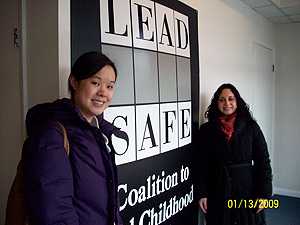Baltimore, Maryland - Coalition to End Childhood Lead Poisoning
Objective: Assess process and outcome achievements of family advocacy services provided by the Coalition to End Childhood Lead Poisoning. View the 2009 Baltimore, Maryland Logic Model Abstract: The evaluation plan was designed for the Coalition to End Childhood Lead Poisoning (Coalition) in Baltimore, Maryland. The evaluation will assess the effectiveness and impact of each family advocacy intervention on reaching its short- and long-term goals, with the ultimate impact of eliminating childhood lead poisoning. Recommendations focus specifically on family advocacy initiatives including case management, legal services, and home assessments. Coalition to End Childhood Lead Poisoning—Goals The Coalition is working to achieve the goal of eliminating childhood lead poisoning by 2010. One way to accomplish this is to meet short- and long-term family advocacy services goals. Short-term goals include the relocation of families living in lead hazard housing, promoting lead hazard reduction, and increasing knowledge that can modify behaviors and thereby reduce lead exposure. Long-term outcomes include sustaining behavioral change to prevent lead poisoning, expanding empowerment, maintaining lowered BLL for children, increasing the number of families and children living in safe and stable housing, and ultimately preventing EBLL cases. Evaluation Plan Recommendations To measure the effectiveness and impact of the family advocacy services, we propose the following:  < 2009 Program Evaluation Projects
< 2009 Program Evaluation Projects
- Expand the database to include fields that will aid in measuring indicators,
- Collect initial and follow-up child BLL from the referral source,
- Follow up with all clients who receive services, and
- Administer pretests and posttests to clients to assess knowledge and behaviors. These tests will assist in an evaluation of education and legal services effectiveness.

- Page last reviewed: June 1, 2009
- Page last updated: June 1, 2009
- Content source:
National Center for Environmental Health, Division of Emergency and Environmental Health Services


 ShareCompartir
ShareCompartir